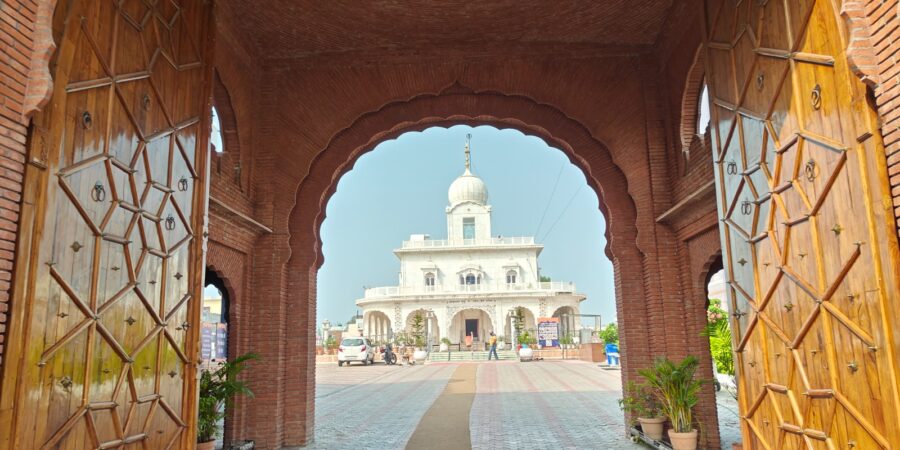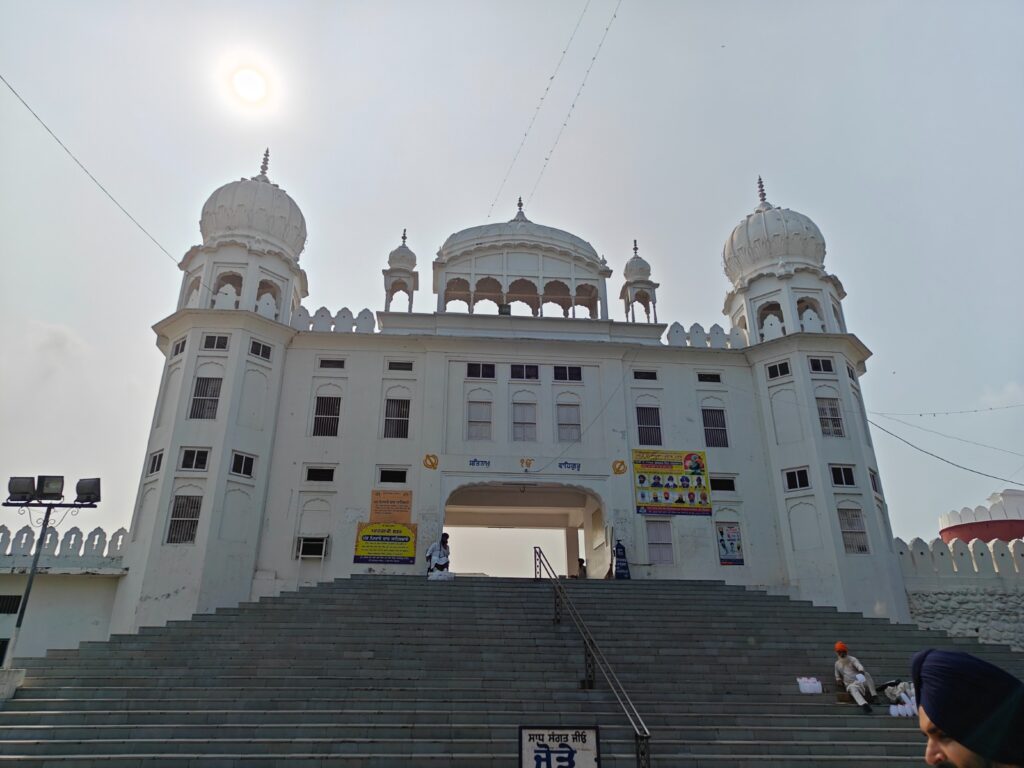Anandpur Sahib in Rupnagar district is the birth place of Khalsa. Sri Guru Tegh Bahadur Ji, the ninth Sikh Guru. laid the foundation of Anandpur Sahib on the banks of River Sutlej, where later during the period of Sri Guru Gobind Singh Ji, the ‘Khalsa’ was born. Sri Keshgarh Sahib is one of the five sacred Takhts (religious seats) of Sikh religion is located here.
Takht Sri Keshgarh Sahib is the principal shrine in Anandpur Sahib. This is the historic site where, on the day of Baisakhi in 1699, Sri Guru Gobind Singh Ji initiated his followers into the order of the Khalsa. It was here Sri Guru Gobind Singh Ji baptised five brave men with amrit (holy water). In the sanctum sanctorum of Takht Sri Keshgarh Sahib, the belongings of Guru Gobind Singh – a khanda, a dagger, a shield, a chakkar, three swords and several spears – are preserved.
An annual Hola Mahalla festival is held here during the month of March. Anandpur Sahib is the most visited pilgrimage site after Sri Harmandir Sahib in Amritsar. The town has many other religious, historic and natural sites for visit by the tourists. The festival of Hola Mahalla was instituted by Sri Guru Gobind Singh Ji on 22 February 1701 as a showcase for Sikh martial arts. Hola Mahalla derives its name from ‘the charge of an army’. Thus, ‘hola’, or ‘halla’, means a military charge, while ‘mahalla’ means a procession, or an army column. Some of the most breathtaking feats at Hola Mahalla are performed by skilled Nihangs. These include the dangerous arts of tent-pegging and gatka, ‘warriors’ engage in mock fights with use of real weapons.
Virasat-e-Khalsa is a museum located close to Gurudwara Sri Keshgarh Sahib, and is spread over an area of 120 acres with 40 acres built-up area. The museum gives visitors an insight into the Sikh history including birth of ‘Khalsa’ displayed through a series of beautiful paintings, portraying lives of all Sikh Gurus, their struggles and heritage.
Sri Guru Tegh Bahadur Museum was built in 1983 in commemoration of the third centenary of the Guru’s martyrdom. Located near Takht Sri Keshgarh Sahib, the museum’s architecture reflects that of the gurudwara. A large collection of paintings, narrating the history of the Sikhs, including depictions from Sri Guru Tegh Bahadur Ji’s life, are displayed here. The beautiful nine domes inside the museum are made of fiberglass that glitters and are a treat to watch.
Read the full story that first appeared in Money Control here:


